It’s that time of year when the pesky pests come out to munch on our favorite garden plants. The warmer the weather, the faster those tiny eggs hatch. Before we know it, an army of aphids (or other pests) have decided to call our plants “home”. There are some things to know when determining how to manage pests in the yard. First, you’ll need to identify what you have in order to choose the best course of action. Some pests can be managed with a strong spray of water from hose, others may require an insecticide. Most insecticides target select pests. If you don’t know what you have, clip a small section of plant that is affected and put it in a sealed, clear plastic bag. Take the sample to your local garden center or county extension office for identification.
The most common pests are aphids, spider mites, white fly, Japanese beetles, earwigs, scale, and slugs. There are a plethora of other insects, like tomato horn worm, psyllids, flea beetles and geranium bud worm, too. Many will be managed by Mother Nature’s predatory insects. Others, however, may require a bit of direct attention.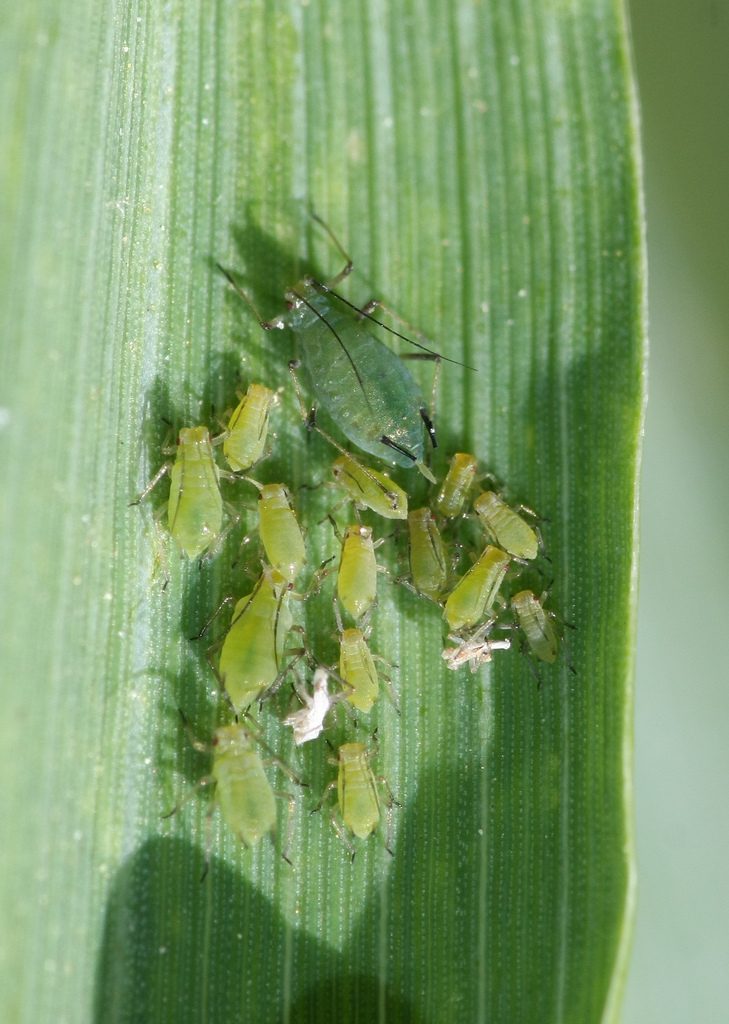
Aphids are probably the most common garden pest. They are usually green, but may be black or red, or even woolly. Aphids are pretty easy to identify. You’ll be able to see adults with their distinctive horn-like spikes over their back legs.
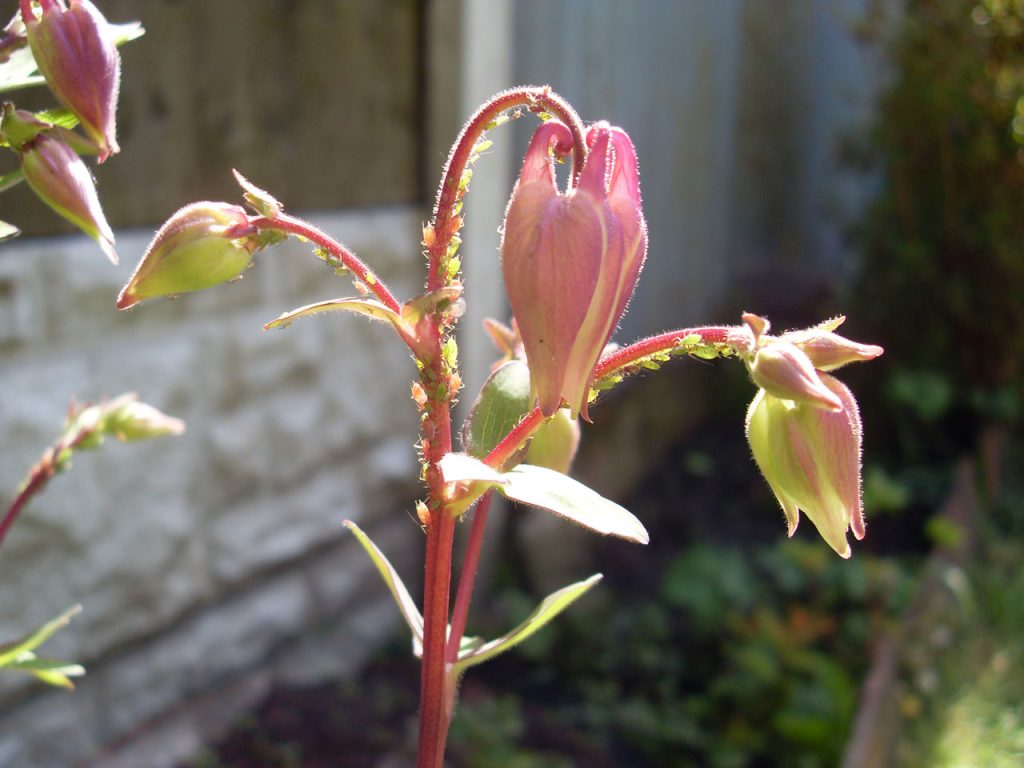
Aphids are pretty easy to manage. If it is a light infestation, like the one pictured above, a hard stream of water will knock them off, pretty easily. Ladybugs love to munch on aphids. Release them in the cool evening hours and they’ll be making mince meat out of those aphids in no time. Your ladybugs will stay in the area as long as they have a food supply. Once your aphids are under control, they are likely to move on to another food source. They can also be controlled using Neem oil or pyrethrin sprays. Both are safe and effective, natural products. Avoid applying any chemicals on hot sunny days. Apply them in the morning or evening, to avoid damage to foliage.
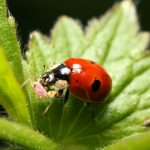
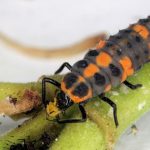
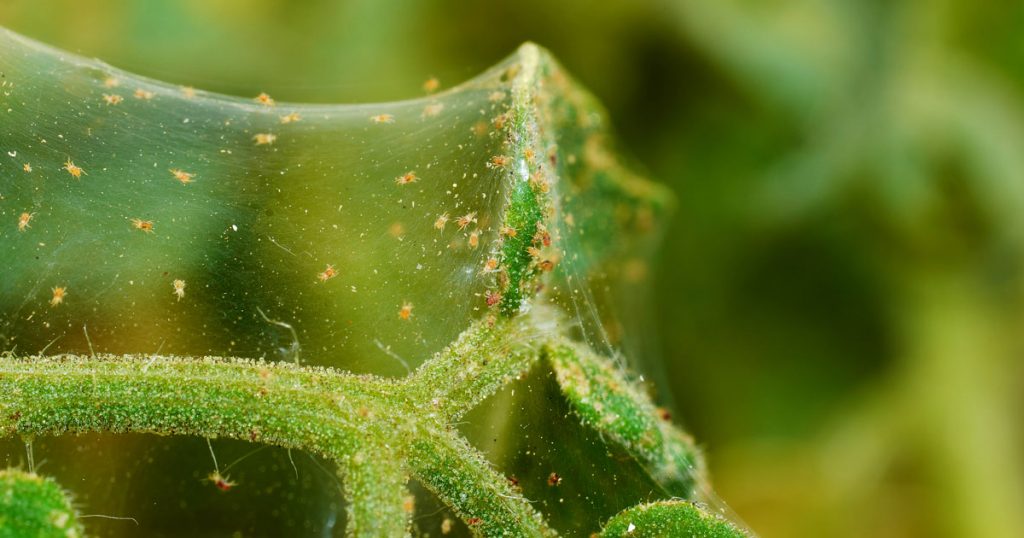
Spider Mites
These tiny little creatures usually go without notice until we see their telltale webs. For the most part, they hand out on the back of leaves, sucking the life out of our plants. They are a little smaller than a pin head, making them difficult to see with the naked eye. If you hold a piece of paper under an infested leaf and tap the leaf, some will fall onto the paper, making them easier to see. Spider mites aren’t fond of moisture. Direct water spray from a hose nozzle will usually knock them off. That said, they are persistent little buggers. Spraying them with a pyrethrin spray, or Neem oil would be prudent. As with any chemical that is not a systemic, you’ll want to spray ever 5-7 days for 2-3 weeks, in order to catch each life cycle.